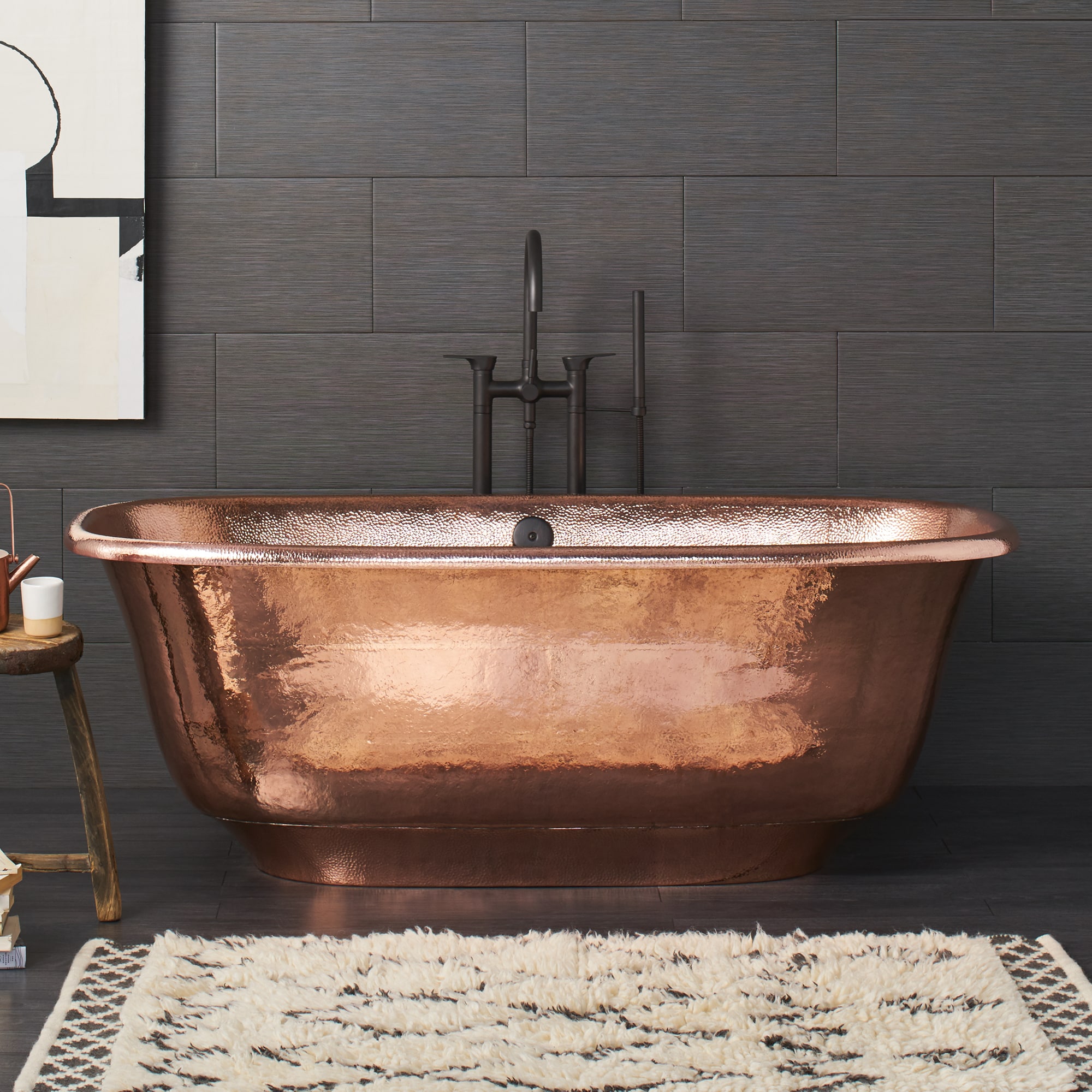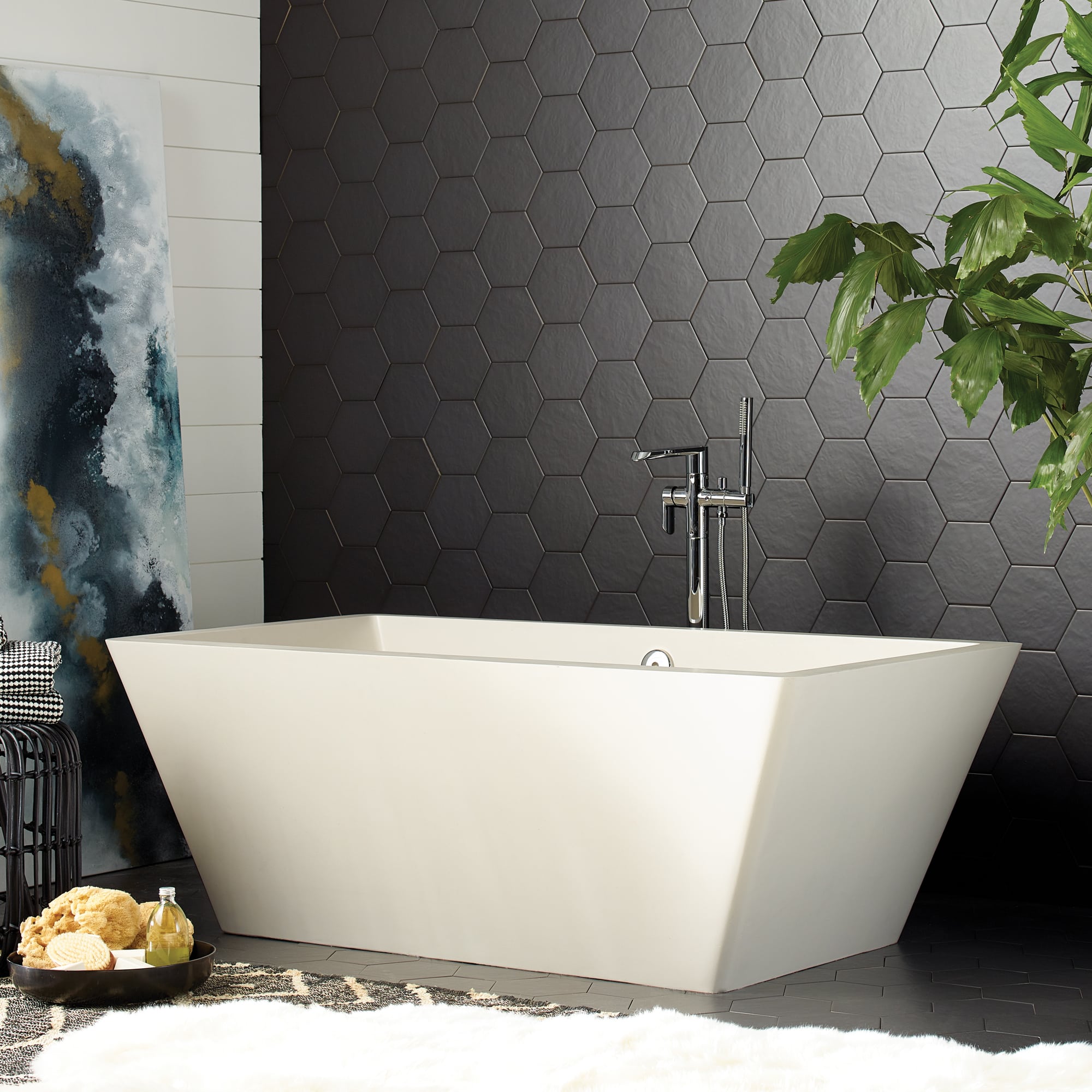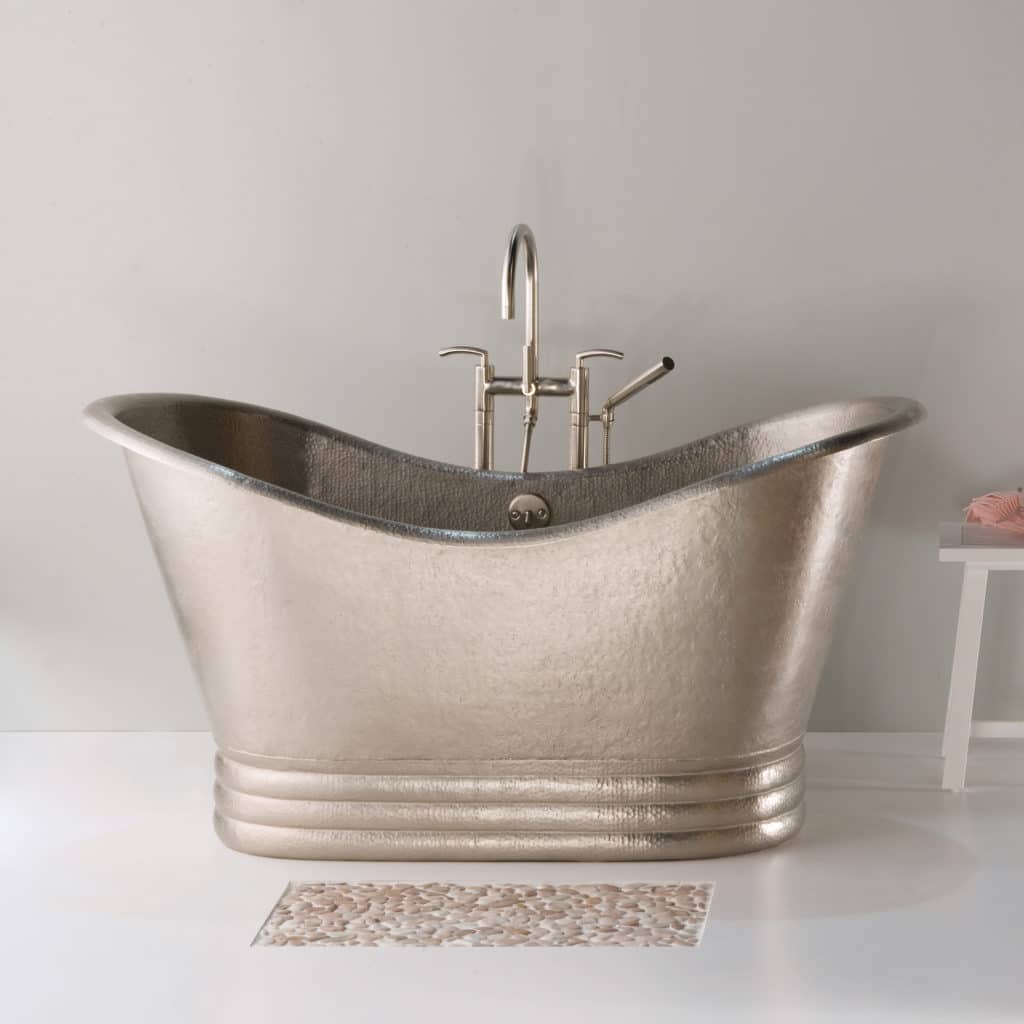An Ode to the Bathtub
Ellen Mallernee Barnes, guest blogger
You’re either a bath person or you’re not. Those who content themselves with showers are a different breed from those who crave a soak so hot it warms the bones. I am a bath person. In junior high, I would collect all the candles from around the house, line them up on the bathroom countertop and light them, lock myself in the bathroom with a boombox, and run a bath, piping hot and close to overflowing. In college, I searched specifically for a studio apartment with a bathtub. Then, I would soak and dream about being an adult.
Now, I soak and distract myself from being an adult. The bath is where I retreat when I’m sad. It’s perhaps the best place to have a good cry. A favorite Sylvia Plath quote: “I am sure there are things that can’t be cured by a good bath, but I can’t think of one.” The bath is where I go when I need a break, or a pick-me-up. I fantasize about one day acquiring the perfect freestanding bathtub—with the exact right pitch for resting my neck and length enough to stretch out my long legs. Prior to vacations, I search online for hotels and beach houses with beautiful bathtubs. A favorite memory from a trip to Barcelona was my discovery of an extra-long and obscenely deep copper bathtub in the apartment we rented there. I found reasons to climb into that tub twice a day during our stay.
Isn’t taking a bath something like a mini-vacation? A trip away from reality that restores a sense of well-being?
I’m far from being the first person to rhapsodize about the benefits of a good bath. Artists have long painted romantic scenes of both public and private bathing. Most cultures are characterized in part by their bathing practices. The Romans built elaborate bathhouses that included adjacent hot and cold rooms, as well as medium-temperature lounging rooms. The Japanese, too, have a long history of public bathhouses, and much has been written about their bathing rituals. To this day, the bath’s place in the life of the Japanese has precedence enough that homes in Japan seldom have a bathtub and toilet in the same room. The bath gets a room of its own.
In a speech reprinted in Interior Design, the late Bernard Rudofsky told of the bath’s halcyon days. “In the Middle Ages, an epoch generally dismissed as dark and dirty, men and women bathed together and took their time about it. They often remained in the water for a meal, served on floating tables, and in time, the bath became the favorite place for banquets, accompanied by song and music, with the musicians seated in the water. Men kept their hats on, women were impeccably groomed for the occasion–from the navel upwards, wearing chokers and necklaces, turbans and towering headdresses. A veil marked the status of a married woman.
Bathing scenes woven into Gothic tapestries leave no doubt that bathing was indulged with equal gusto by prince and pauper. In the morning, the opening of the public baths was announced by the sound of trumpets and drums. … For the stay-at-home a wooden tub was brought to the bed-chamber and filled with hot water. If the chronicles are to be believed, the wealthy had elaborate installations with pipes made of gold and silver, and one Heinrich von Veldecke, an epic poet, sang the praises of a golden tub. In the spring, bathing parties would move to outdoor pools and ornate basins, amid statuary and flowering trees. Dark ages indeed!”

Santorini copper bathtub in Polished Copper
The history of the bath isn’t all booze and brouhaha. Some cultures bathed only for hygienic reasons while others believed bathing caused the spread of disease. Some bathed for religious reasons, others didn’t bathe for religious reasons. Of course, medieval kings, lords, and members of their household usually bathed far more often than peasants. Archaeologists have found that some had designated rooms for bathing. While others had tubs brought into their rooms, which were then filled with water that had to be gathered, heated, and toted into the room one bucket at a time.
Believe it or not, prior to the 1840s, almost no American homes had a dedicated bathroom. Says Katherine Ashenburg, author of The Dirt on Clean: An Unsanitized History, “Until well into the 1920s in rural places, you would just move your tin tub into the kitchen on Saturday night and fill it with warm water. Then everybody in the family, one by one, would get into the same water, starting with probably the father, who was the most important, and going down to the daughter-in-law, who was the least important.”
Thank goodness the days of public bathhouses and bathwater-sharing in the kitchen are gone. Although I love that bath time used to be party-time. I use my baths in part as an excuse for some quiet time alone. For as much as I love baths, I’m not someone who likes to—or has time to—stay in one for extended periods. Seldom am I in the bathtub long enough to get wrinkly toes; instead, I like my baths quick and almost painfully hot, a baptism before bed after a long day. Even in short doses, baths seem to provide me with all the benefits that scientists claim they do—helping to open my pores, relax my muscles, relieve stress, and get me off to sleep. Most of all, a bath just makes me happy. Always has, always will.
Read More: The Copper Bathtub in History




